Introduction
Autism spectrum disorder (ASD) is a complex condition with a significant genetic component. Research indicates that genetics play a crucial role, accounting for 50% to 90% of the risk for autism. Scientists have made remarkable strides in understanding the genetic underpinnings of ASD, utilizing innovative techniques like transport-based morphometry to identify patterns in brain structure that correlate with genetic variations.
These findings pave the way for personalized interventions and a genetics-first approach to autism. However, it's important to recognize that genetics is just one part of the broader autism puzzle, which also involves environmental interactions and other factors yet to be fully understood. In this article, we explore the fascinating world of autism genetics, uncovering the complexities and implications for families and individuals affected by ASD.
Understanding the Heritability of Autism
Autism spectrum disorder (ASD) is a multi-faceted neurodevelopmental condition with evidence indicating a significant hereditary influence. Research highlights that ASD often happens within families, strengthening the idea of a predisposition to the disorder. A remarkable body of evidence now estimates that genetics account for approximately 50% to 90% of the risk for the condition, highlighting the prominence of hereditary factors in its manifestation. With advances in genetic research, scientists have utilized innovative mathematical modeling techniques, such as transport-based morphometry (TBM), to discern patterns in brain structure that correlate with variations in the genetic code. These 'copy number variations'—sections of the genome that are either duplicated or deleted—are closely associated with the development of the condition. It's a groundbreaking step in the genetics-first approach to comprehending neurodevelopmental disorders, potentially opening the door for more personalized and efficient interventions.
Genetic studies related to a certain condition not only adhere to rigorous ethical guidelines but also respect privacy concerns, ensuring that personal identifiers used in research remain confidential. Critical approvals from entities like the Danish Data Protection Agency underscore the integrity of the research process. Although these studies are crucial for progressing our understanding of ASD, it is equally noteworthy that the hereditary aspect is merely one component of the broader puzzle surrounding autism, which encompasses interactions with the environment and other factors that are still not completely comprehended.
Genetic Factors in Autism Development
Autism spectrum disorder (ASD) is a multifaceted condition with an underpinning that is gradually being unraveled by scientific inquiry. Advancements in this domain have resulted in the discovery of particular genes that can increase the likelihood of ASD, with alterations in the SHANK3 gene being associated with Phelan-McDermid syndrome, a uncommon variant of the condition. The genes CHD8 and SCN2A also play a significant role in the development of ASD, contributing to the intricate tapestry of genetic factors influencing the disorder. These findings are the result of thorough investigation following ethical standards and authorized by organizations such as the Danish Data Protection Agency, highlighting the integrity and significance of comprehending genetics in the condition. Such insights pave the way for a deeper comprehension of ASD and foster the potential for tailored interventions that can significantly enhance the lives of individuals affected by ASD.
The Role of Common and Rare Genetic Variants
The complex puzzle of the origin of autism spectrum disorder is slowly being put together through careful investigation, with hereditary elements playing a crucial part. Both common and rare hereditary variants are instrumental in this complex condition, each exerting varying degrees of influence. Typical hereditary variations, although more common in the overall populace, tend to exert a more subtle influence on the probability of developing autism spectrum disorder. On the other hand, uncommon hereditary variations, although not as prevalent, can greatly influence an individual's risk. The interplay between these hereditary factors is crucial; they do not act in isolation but interact with one another and with environmental factors, weaving a multifaceted web that affects the emergence of a certain developmental disorder. Thorough studies, following ethical principles and approved by organizations like the Danish Data Protection Agency, highlight that comprehending the intricate contributions of these hereditary components is crucial to decipher the tapestry of the condition. It is through such diligent scientific inquiry and adherence to robust ethical standards that our understanding of the underpinnings of autism's inheritance continues to advance.
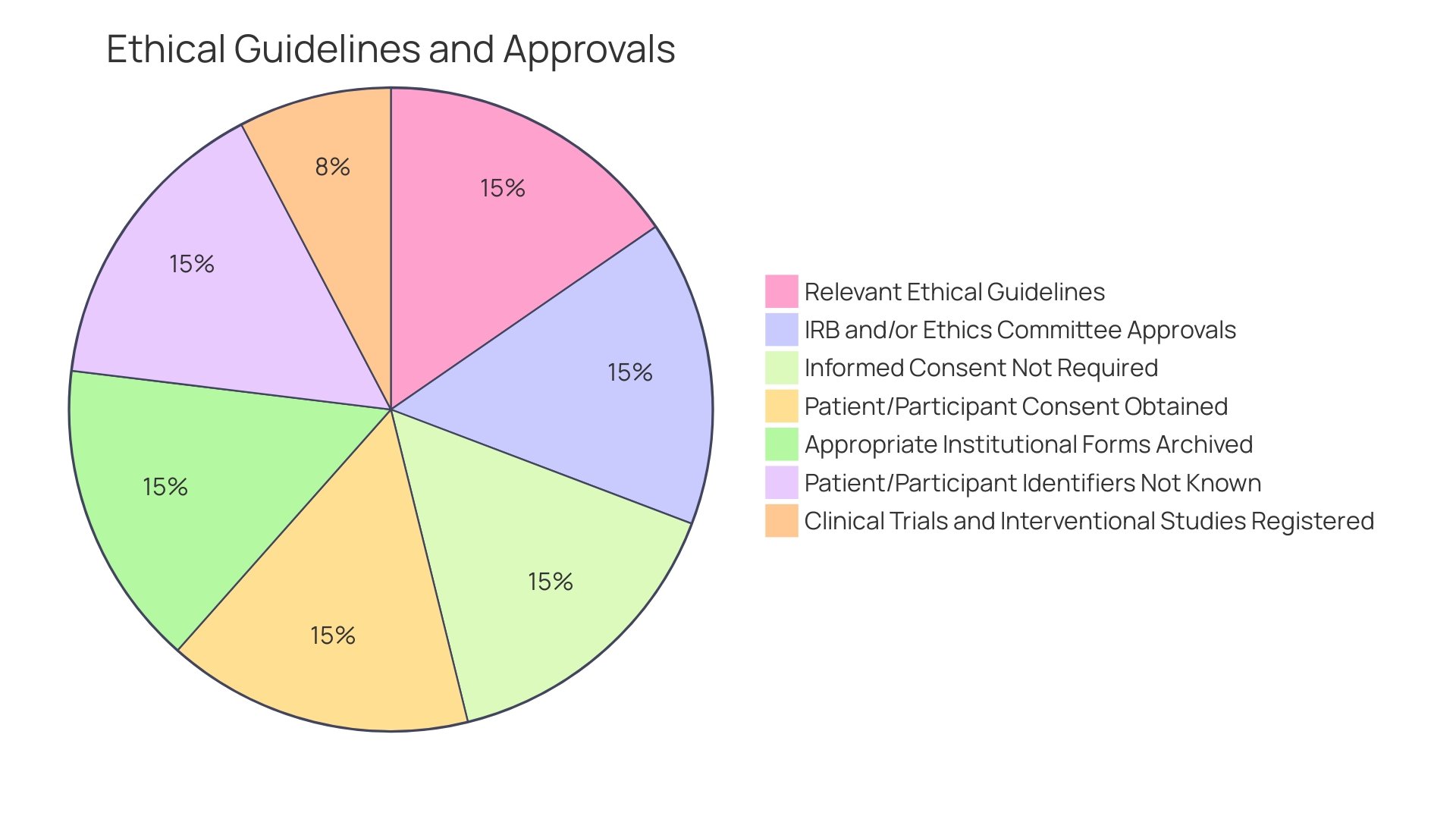
Environmental Factors and Their Interaction with Genetics
Autism spectrum disorder (ASD) has long been understood to have a strong hereditary component, but unraveling the influence of environmental factors has been equally critical. Prenatal exposure to certain chemicals or maternal infections has been linked to a higher ASD risk. Significantly, a creative computer modeling technique called transport-based morphometry has revealed brain structure patterns that are related to variations in the genetic code known as 'copy number variations,' which are deletions or duplications associated with a developmental disorder.
Understanding these genetic and environmental interplays is bolstered by rigorous research protocols. Studies receiving approval from the Danish Data Protection Agency, for instance, adhere to ethical guidelines and ensure participant confidentiality, reinforcing the integrity of the findings. These rigorous moral considerations are crucial when examining the origin of ASD, as they offer a dependable basis that enlightens our comprehension and backs the pursuit of groundbreaking screening techniques and potential interventions for individuals with ASD.
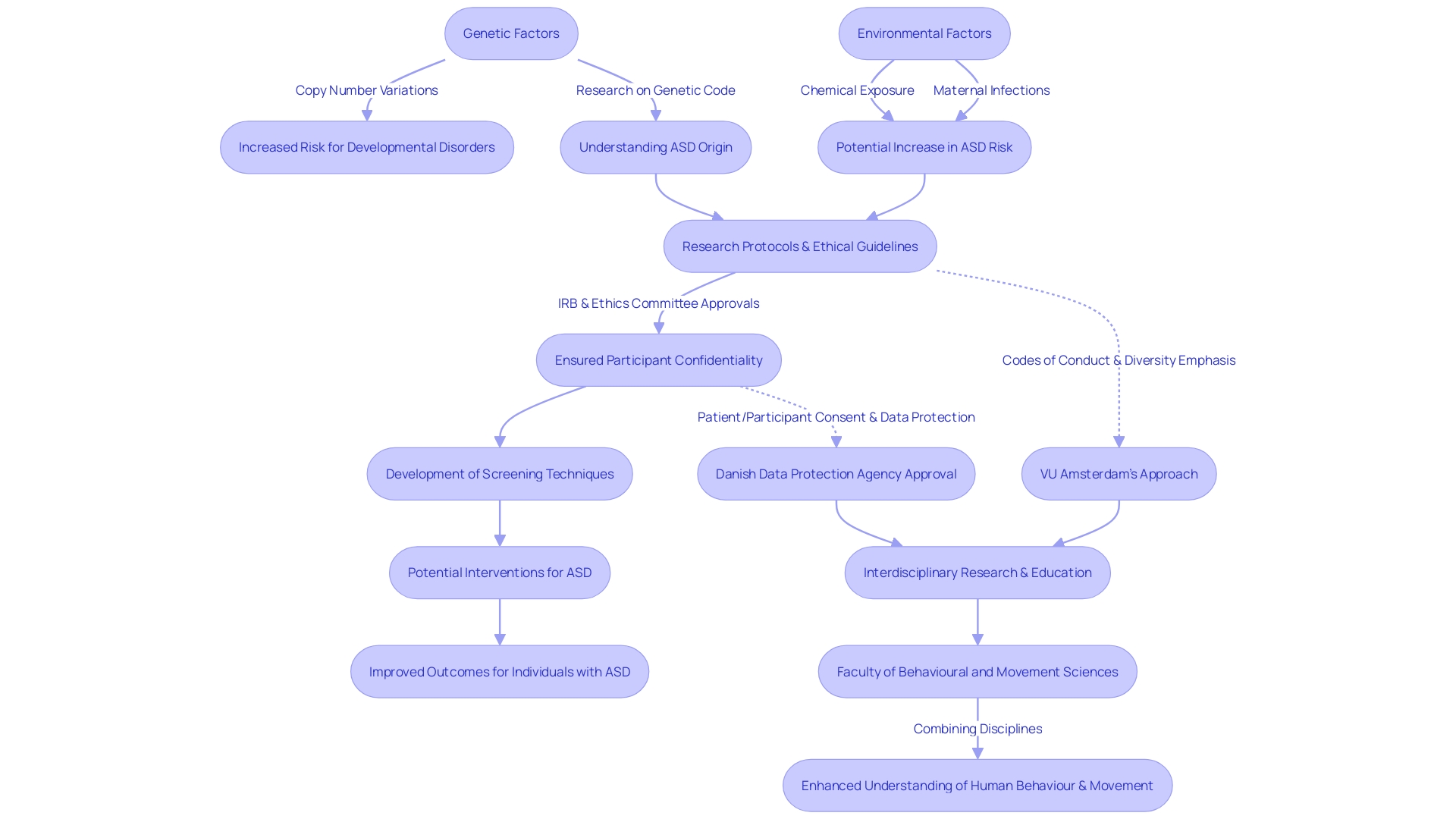
Family Studies and the Risk of Autism
Investigations into the hereditary patterns within families have revealed that siblings of individuals with a certain developmental disorder are at a heightened chance of developing the condition themselves, indicating that this condition may cluster within families. This phenomenon, known as familial aggregation, points to the significant role genetics play in the condition's prevalence. Through meticulous studies on family patterns, emerging patterns in the inheritance of autism are enabling researchers to provide families with estimations of the likelihood of it happening again. These insights are particularly crucial for families navigating the complexities associated with the disorder on the spectrum (ASD).
Statistics have shown that the recurrence risk for ASD is indeed higher among siblings, which has been substantiated by rigorously designed, ethically sound research studies. Although these studies must adhere to strict ethical guidelines and obtain approvals from governing bodies like the Danish Data Protection Agency, they serve as a cornerstone for understanding the hereditary basis of developmental disorder. Furthermore, a thorough comprehension of environmental factors remains elusive, as current technologies are insufficient in fully capturing the wide variety of transient exposures from in utero to adulthood that may interact with hereditary inclinations.
These findings emphasize the significance of ongoing research in the genetics of ASD, which has deep implications for early intervention strategies and resources for families. By enhancing our comprehension of the hereditary elements and recognizing the part of ecological impacts, we can more effectively assist communities and encourage universal screening to detect ASD as early as possible.
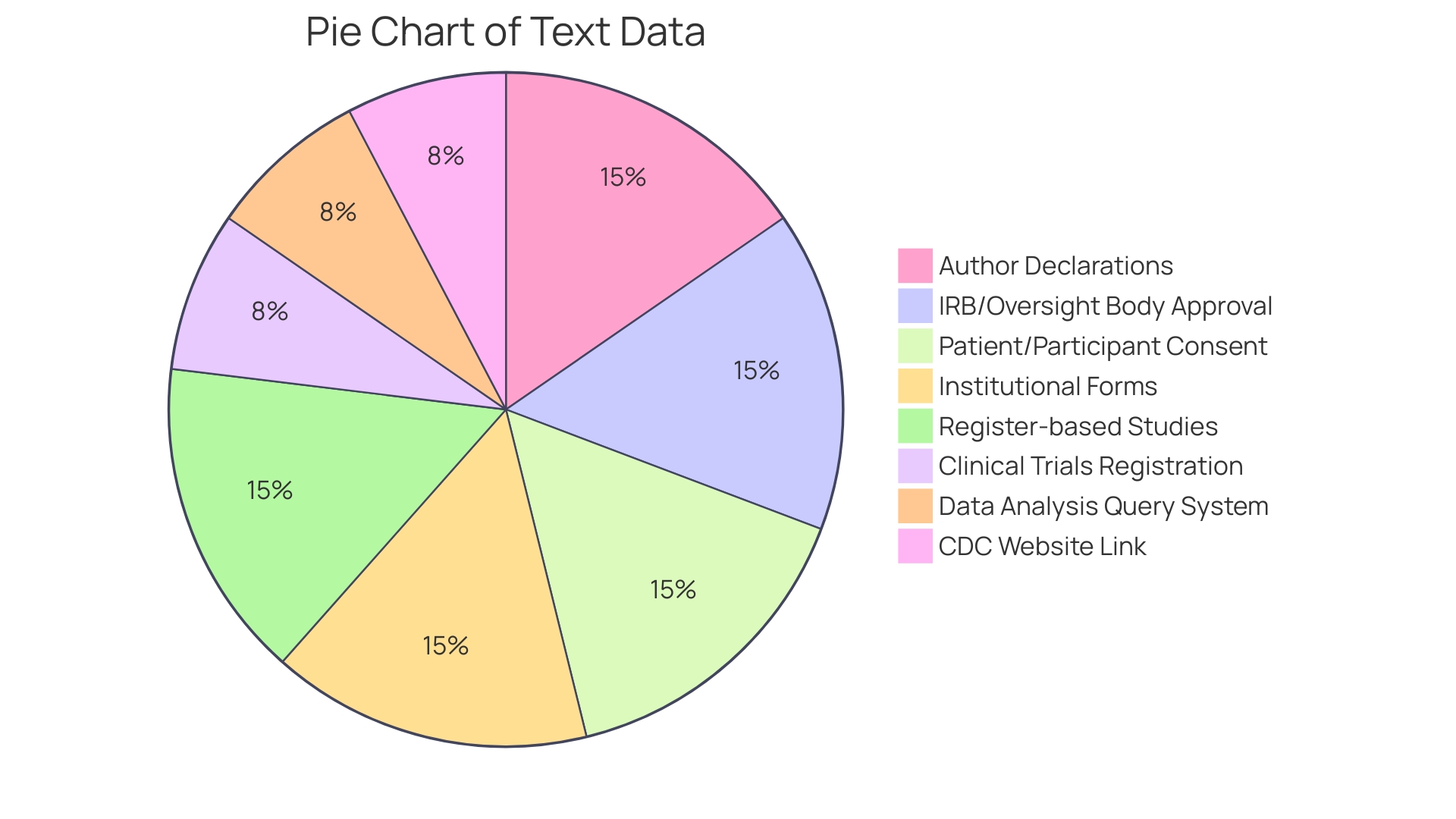
Maternal and Paternal Contributions to Autism Risk
The complex interplay of genetic and environmental factors contributing to autism spectrum disorder (ASD) includes significant parental influences. Research highlights that not only the father's age at conception plays a role—with older paternal age correlating to a heightened possibility of ASD in children due to increased sperm mutation rates—but maternal factors are equally crucial. A mother's age, health status prior to pregnancy, and specific prenatal conditions are also implicated in increasing the likelihood of ASD. For example, obesity in mothers before pregnancy is linked to a 42% rise in the likelihood of ASD in their children. These findings are part of a comprehensive meta-analysis involving over 3.6 million mother-child pairs worldwide, emphasizing the significance of counseling on inherited traits and tailored intervention strategies to mitigate these risks. As we continue to unravel the hereditary complexities of ASD, it becomes increasingly clear that both maternal and paternal health and age are pivotal in shaping the developmental trajectory of offspring.
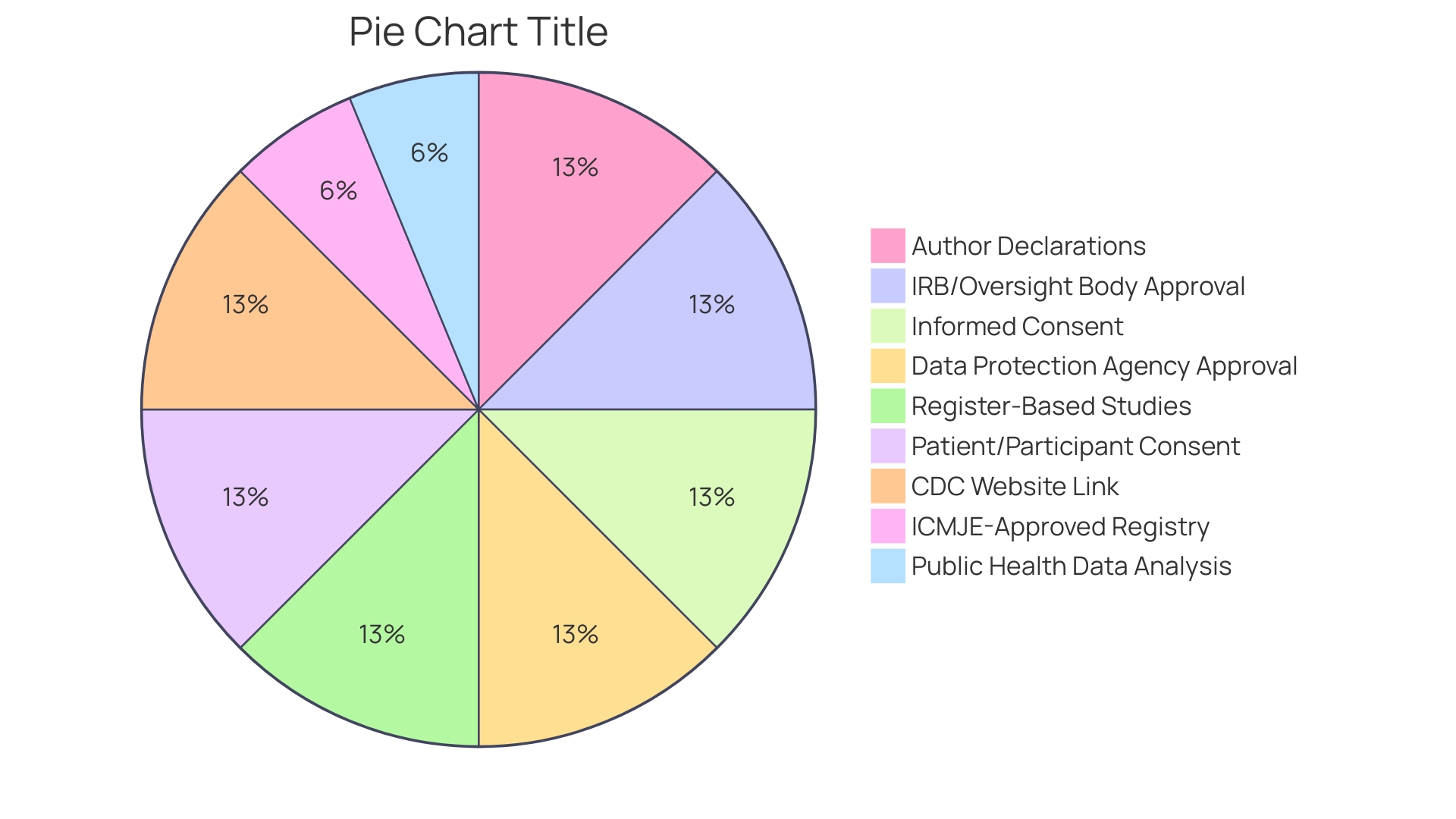
The Complexity of Autism Genetics: Multiple Genes and Pathways
The intertwined genetic factors of spectrum disorder (ASD) have opened up a labyrinth of biological pathways that are key to understanding this condition. Synaptic functions, immune system responses, and neuronal signaling have all been identified as pivotal elements that can be disrupted in individuals with ASD. The diverse nature of the condition is mainly because of the varied interactions between these pathways. For example, James McPartland, a respected professor at the Yale School of Medicine, emphasized the importance of connecting behavioral characteristics of individuals with ASD to differences in brain development. Investigations into the role of specific genes within these pathways are advancing rapidly, with innovative techniques allowing researchers to analyze multiple genes simultaneously, bypassing the limitations of traditional gene-by-gene analysis. These research endeavors adhere to strict ethical guidelines and have received necessary approvals, ensuring that the findings contribute meaningfully and ethically to the body of knowledge around ASD. As we gain a foundational understanding of these biological building blocks, we edge closer to crafting interventions that are more precise in targeting the diverse needs of those with developmental disorder.
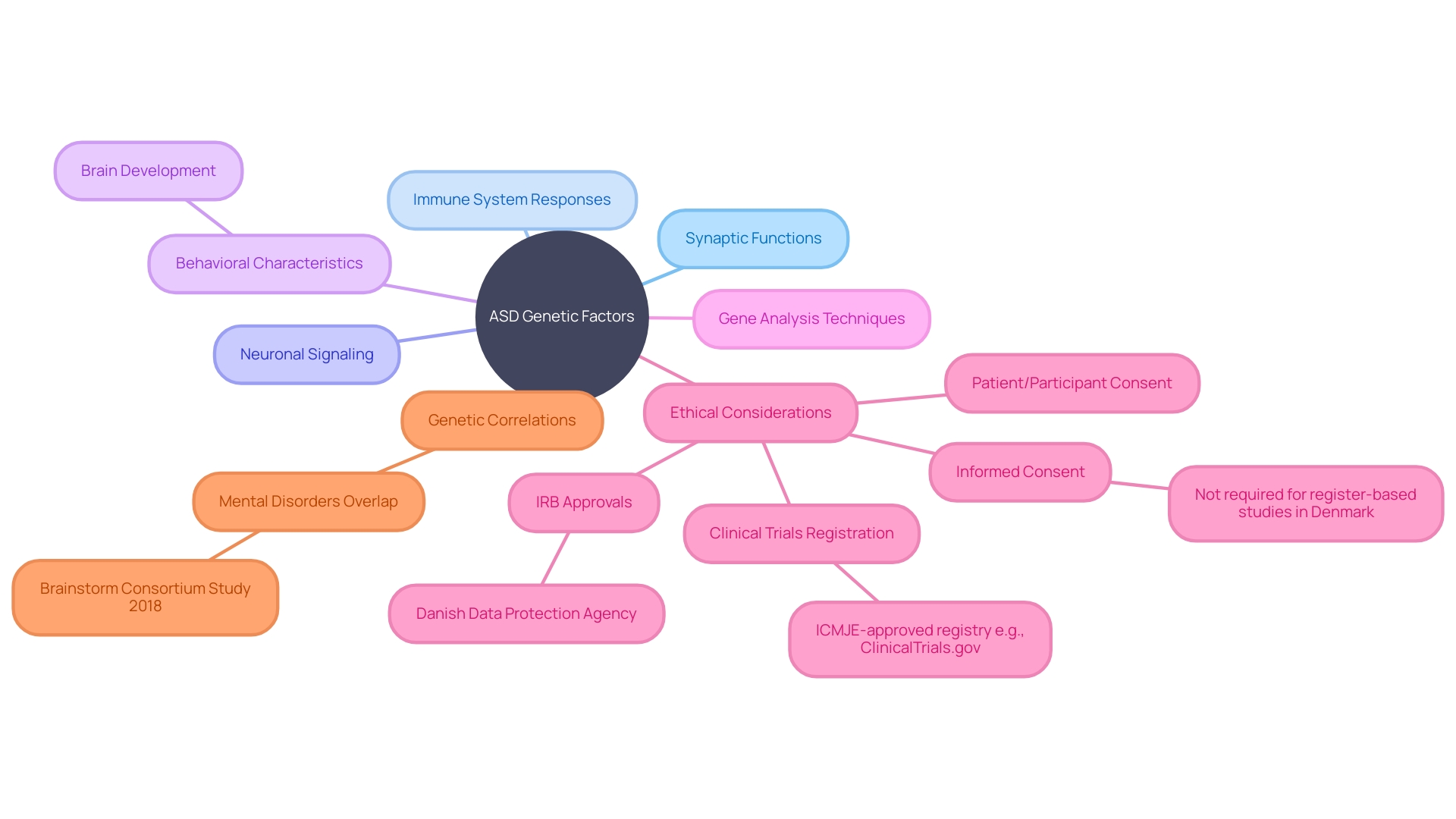
Recent Research Findings on Autism Genetics
Unveiling groundbreaking insights into the genetics of autism spectrum disorder (ASD) is possible through the utilization of state-of-the-art sequencing technologies. These innovations have resulted in the identification of new genes and variations that contribute to the progression of a certain neurological disorder. In recent large-scale genome-wide association studies, scientists have identified common variants in the genome that enhance the likelihood of ASD. Furthermore, the discovery of uncommon gene alterations has also been demonstrated to significantly impact the likelihood of developmental disorders. These insights are not only enhancing our understanding of the intricate framework of autism but also laying the groundwork for future research that may lead to new therapeutic approaches.
In the pursuit of early and accurate diagnosis of hereditary conditions, these studies are especially pivotal. They emerge in an era where newborn screening programs vary significantly worldwide, with some countries screening for as few as six diseases and others for over 40. By expanding the range of diseases screened, including both early-onset treatable diseases and actionable hereditary information for later-onset diseases, we can potentially shorten the arduous diagnostic journey for families. Early detection is crucial, as it can lead to earlier interventions and, as a result, more favorable outcomes. This is particularly relevant in the context of ASD, where early behavioral therapy has been linked to better long-term results. Moreover, progress in individualized hereditary therapies and gene modification are laying the groundwork for tailored treatments to be created rapidly, emphasizing the significance of these hereditary discoveries.
A "genetics-first" approach may transform our understanding and management of a certain developmental disorder, as proposed by researchers in a recent publication in Science Advances. Their innovative work employs a novel mathematical modeling technique to reveal brain structure patterns that correlate with specific genetic code variations, known as "copy number variations," which are associated with autism. Such a genetics-focused approach holds the promise of facilitating a more profound understanding of ASD and potentially guiding more effective interventions.
Conclusion
In conclusion, genetics play a significant role in autism spectrum disorder (ASD), accounting for 50% to 90% of the risk for autism. Innovative techniques like transport-based morphometry (TBM) have enabled scientists to identify brain structure patterns that correlate with genetic variations, paving the way for personalized interventions and a genetics-first approach to autism.
While genetics is crucial, it's important to acknowledge that environmental interactions and other factors also contribute to ASD. Prenatal exposure to certain chemicals and maternal infections have been linked to a higher risk of ASD, emphasizing the need for a comprehensive understanding of the interplay between genetics and the environment.
Genetic studies in autism adhere to rigorous ethical guidelines and prioritize participant confidentiality. Approvals from entities like the Danish Data Protection Agency ensure the integrity of the research process and support the development of innovative screening methods and interventions.
Family studies have revealed that siblings of individuals with autism have a heightened risk of developing the condition, highlighting the significant role of genetics in autism prevalence. Understanding patterns of autism inheritance enables researchers to provide families with recurrence risk estimations, aiding them in navigating the complexities of ASD.
The interplay between common and rare genetic variants is crucial in autism. Common genetic variants have a subtler effect on autism likelihood, while rare variants can have a profound impact. These genetic factors interact with each other and with environmental factors, contributing to the complex nature of autism.
Maternal and paternal factors both influence the risk of ASD. Older paternal age and certain maternal conditions, like obesity prior to pregnancy, are associated with an increased risk of autism in children. Understanding these parental influences is essential for genetic counseling and tailored intervention strategies.
Autism genetics involve multiple genes and pathways, including synaptic functions, immune system responses, and neuronal signaling. Analyzing multiple genes simultaneously allows for a deeper understanding of autism's genetic building blocks and the development of precise interventions.
Groundbreaking insights into autism genetics have been achieved through advanced genetic sequencing technologies. Novel genes and variants associated with autism have been discovered, opening doors for early and accurate diagnosis and potential therapeutic approaches.
In summary, genetics is a significant component in understanding autism spectrum disorder. By unraveling the complexities of autism genetics and considering the interplay between genetics and the environment, we can better support families and promote early interventions. Rigorous research and adherence to ethical guidelines empower us to navigate the challenges of autism and ensure the well-being of individuals with ASD.




